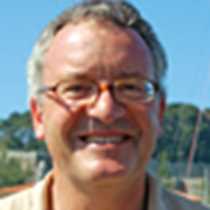Malta
Before breakfast many were on deck as we entered Valletta, radiant in spring sunshine. Founded in 1566, it is one of the great natural harbors of the world. Its magnificent network of fortifications exemplifies Renaissance architecture at its most ambitious. Valetta is the modern capital of Malta, an island community strategically placed in the middle of the Mediterranean, with Africa to the south and west and the toe of Italy to the north, marking the divide between the eastern and western Mediterranean. Midway between the Pillars of Hercules and Alexandria, Malta is also the midway point of our voyage.
The country's emblem, the Maltese Cross derives from the Knights of St John, the Knights Hospitaller, an order founded to care for the sick and wounded on pilgrimage to the Holy Places. Driven out of the Levant, they fell back on Rhodes before finding refuge in Malta for the token rent of a Maltese falcon, paid annually to the Emperor Charles V. The heroic resistance of the Maltese islanders to German and Italian aerial bombardment during the Second World War resulted in the unique award of the George Cross to a community rather than an individual. It is this George Cross that has been incorporated into the Maltese flag since independence from the British in 1964.
Our morning tour of Valletta included a private tour of the Casa Rocca Piccola, a sixteenth-century palace now home to the 9th Marquis de Piro who revealed the property to us room by room. Later we toured the Grandmaster's Palace with its impressive set of portraits of former Grandmasters of the Order of the Knights of St John, including that of the only German Grandmaster who also proved to be the last to occupy the Palace, since he surrendered the island to Napoleon.
Mystery surrounds the earliest inhabitants of the island. A prolonged Stone Age culture produced the stone built temples that were visited by some of us in the afternoon. The exact significance of these impressive monuments and the history of their builders elude us. Malta, by virtue of its location, has attracted successive waves of settlers over the centuries. Phoenicians, Carthaginians, Romans, Arabs, Normans, Spanish, the Knights of St John, and latterly, British, have all left their mark. The alternative option for the afternoon was a walking tour of Medina, the dramatically situated citadel of the Arab conquerors of the island. Their legacy is the Maltese language, the Semitic language spoken in an island nation that is devoutly Catholic. St Paul was famously shipwrecked on the island in 60AD and is greatly venerated on the island.
Before breakfast many were on deck as we entered Valletta, radiant in spring sunshine. Founded in 1566, it is one of the great natural harbors of the world. Its magnificent network of fortifications exemplifies Renaissance architecture at its most ambitious. Valetta is the modern capital of Malta, an island community strategically placed in the middle of the Mediterranean, with Africa to the south and west and the toe of Italy to the north, marking the divide between the eastern and western Mediterranean. Midway between the Pillars of Hercules and Alexandria, Malta is also the midway point of our voyage.
The country's emblem, the Maltese Cross derives from the Knights of St John, the Knights Hospitaller, an order founded to care for the sick and wounded on pilgrimage to the Holy Places. Driven out of the Levant, they fell back on Rhodes before finding refuge in Malta for the token rent of a Maltese falcon, paid annually to the Emperor Charles V. The heroic resistance of the Maltese islanders to German and Italian aerial bombardment during the Second World War resulted in the unique award of the George Cross to a community rather than an individual. It is this George Cross that has been incorporated into the Maltese flag since independence from the British in 1964.
Our morning tour of Valletta included a private tour of the Casa Rocca Piccola, a sixteenth-century palace now home to the 9th Marquis de Piro who revealed the property to us room by room. Later we toured the Grandmaster's Palace with its impressive set of portraits of former Grandmasters of the Order of the Knights of St John, including that of the only German Grandmaster who also proved to be the last to occupy the Palace, since he surrendered the island to Napoleon.
Mystery surrounds the earliest inhabitants of the island. A prolonged Stone Age culture produced the stone built temples that were visited by some of us in the afternoon. The exact significance of these impressive monuments and the history of their builders elude us. Malta, by virtue of its location, has attracted successive waves of settlers over the centuries. Phoenicians, Carthaginians, Romans, Arabs, Normans, Spanish, the Knights of St John, and latterly, British, have all left their mark. The alternative option for the afternoon was a walking tour of Medina, the dramatically situated citadel of the Arab conquerors of the island. Their legacy is the Maltese language, the Semitic language spoken in an island nation that is devoutly Catholic. St Paul was famously shipwrecked on the island in 60AD and is greatly venerated on the island.




